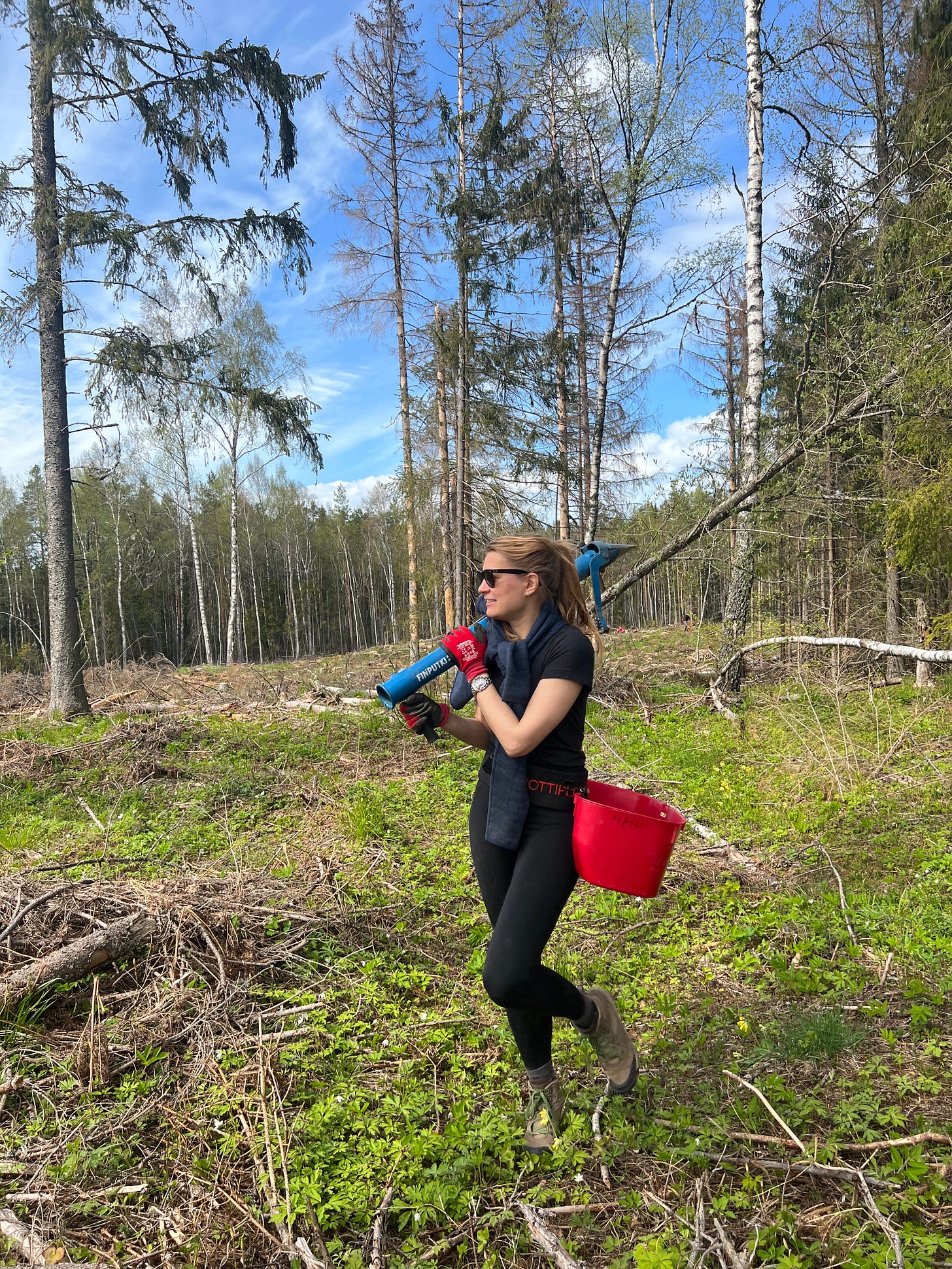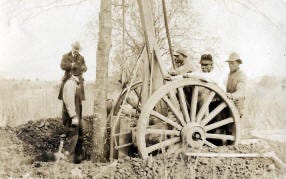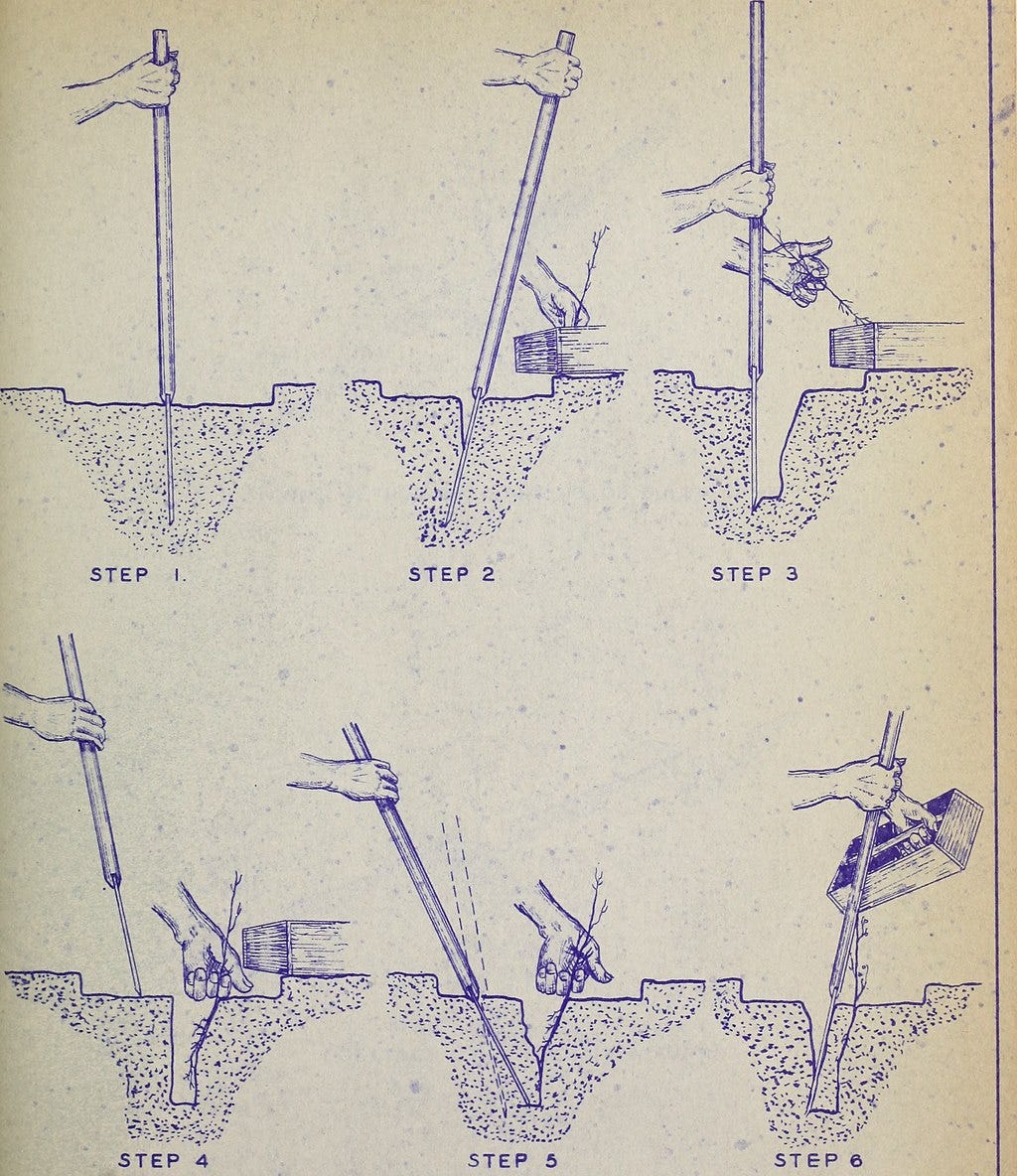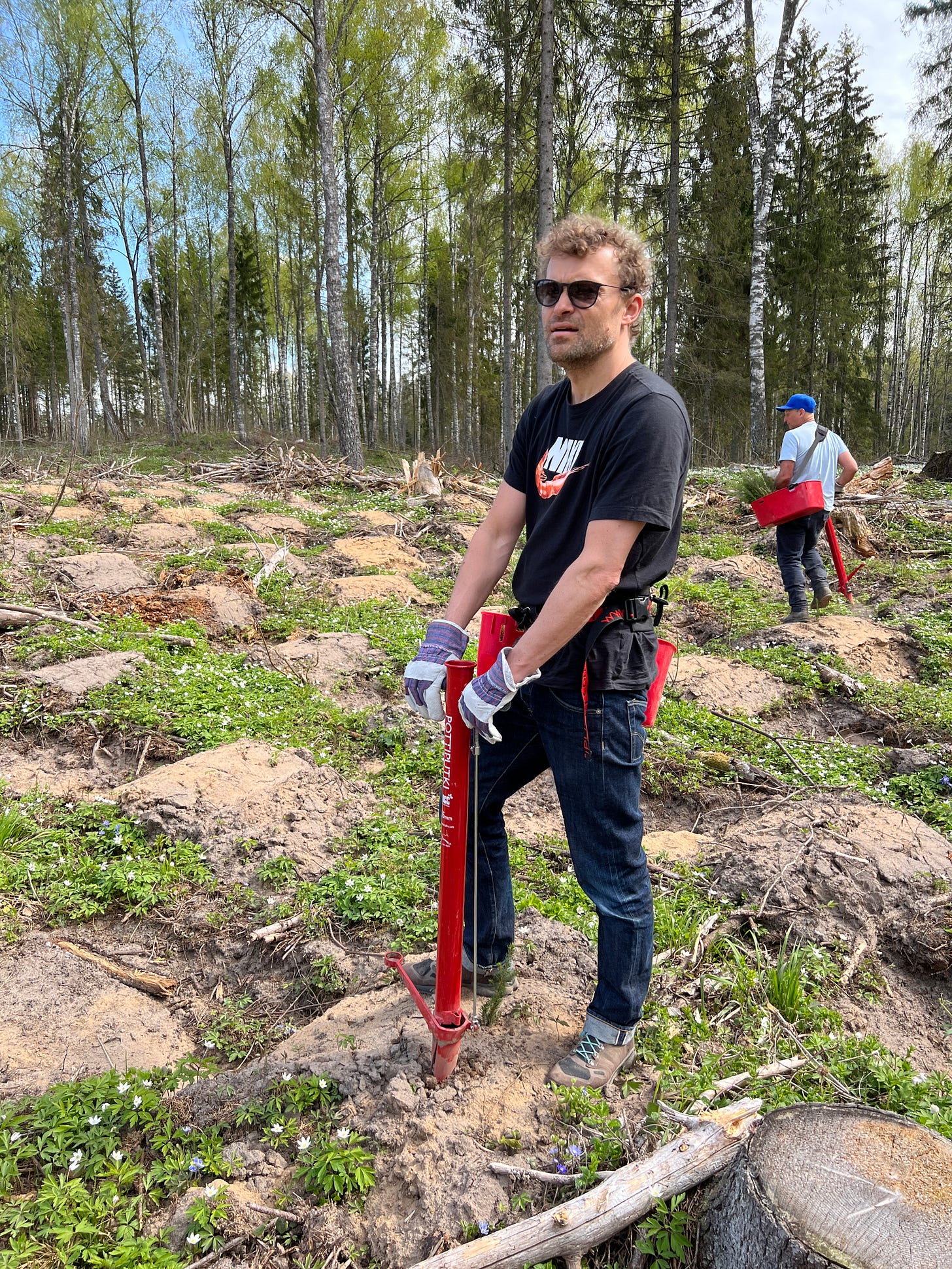Weapons of mass afforestation - or, how the Finnish revolutionised tree planting
Spring has arrived and the planting season is officially upon us. Here's a fascinating story about Finnish innovation in the tree planting world.
If you’ve ever participated in large-scale tree planting*, you might have used one of these:
Photo: Arbonics co-founder Lisett Luik during last May’s tree-planting event
A Pottiputki tree planting tool.
It may not look like much - a metal tube with handles and a spring-loaded flap - but this tool changed the world of forestry.
Let’s go back in time and look at how tree planting worked in history, shall we?
Tree planting machine. Courtesy of https://www.mpha.com/history-original-tree-planting-machine/
How did the ancients handle tree planting?
Tree planting goes back a long, looong way - we have records of the ancient Romans and Greeks sharing their top tips in horticultural manuals. These included:
marking one side of the sapling with chalk so that it can be replanted in the same orientation (still key if you’re replanting older / bigger trees!)
growing saplings in baskets (similar to modern container-grown saplings
A book about tree planting, published in 1662 in the United Kingdom. See page for author, Public domain, via Wikimedia Commons
In technological terms, tree planting has roughly always followed the same concept: make a hole in the ground, stick in the sapling, and re-fill the hole with soil.
However, this process is quite labour-intensive, time-consuming, and physical.
Graphic showing how to plant a sapling. Calkins, Hugh G; United States. Soil Conservation Service. Region Eight. Forestry Division, No restrictions, via Wikimedia Commons
And so it was that in the early 1970s, a Finnish engineer called Tapio Saarenketo figured that there must be a better way to plant saplings than manually digging a hole and painstakingly positioning your saplings by hand.
Thus, Pottiputki was born.
The concept is simple: you position the bottom of the tube on top of a pre-prepared mound, use your foot to jam it deeper - and then slide a sapling in through the top to gently send it into place. Then you remove the tool, pat down the soil, and check that the sapling is secure enough that it won’t fall over. (In Estonian I’ve heard this called “the crow check” - making sure these clever birds can’t easily fly off with our saplings!)
Bonus: no sore back from constantly hunching over!
Using a Pottiputki, a worker can plant around 150 saplings per hour - a significant improvement over more traditional methods.
These days, foresters are also experimenting with purely mechanised solutions, like converted tractors that help plant saplings.
While these can be highly efficient, they cannot always access all the plantable areas. So it’s likely that the trusty Pottiputki continues to be the forester’s tool of choice when it comes to large-scale tree planting for afforestation.
Photo: Arbonics co-founder Kristjan Lepik during last May’s tree-planting event
Notes: * If you have not participated in tree planting before, but you would like to, email us at hello@arbonics.com, subject “Tree planting volunteer” - and we’ll see if we can match you with a local landowner who needs a helping hand this spring!









